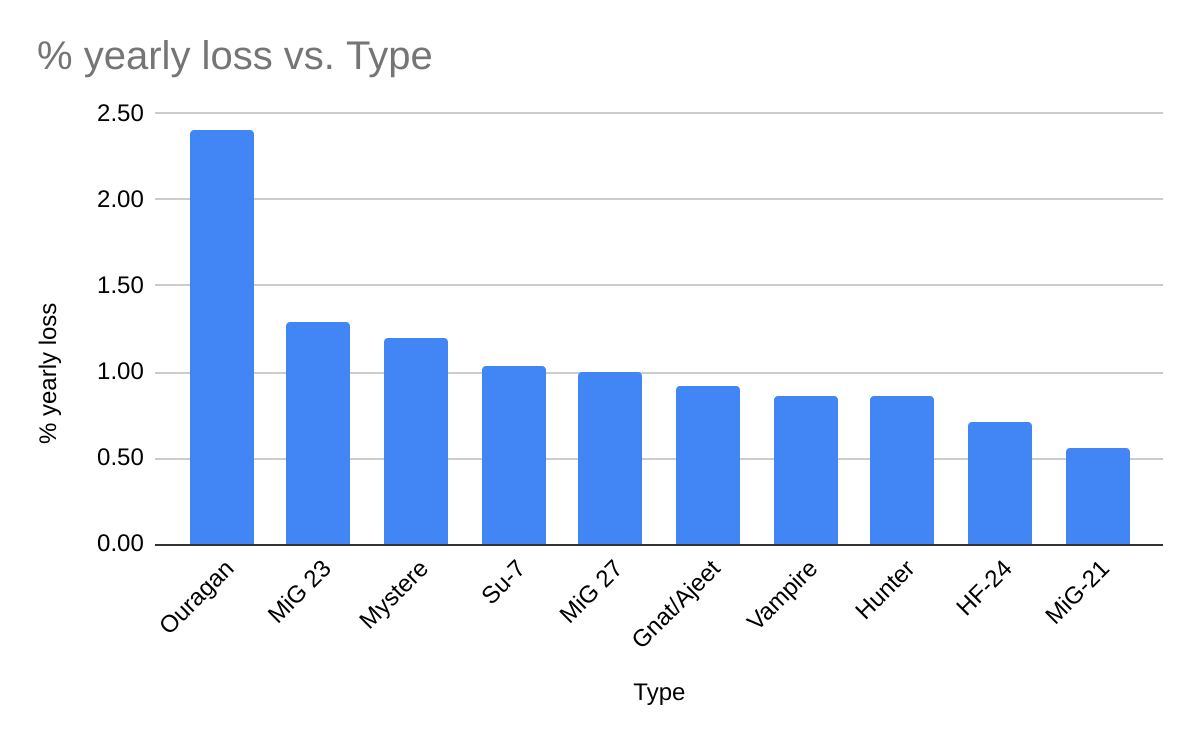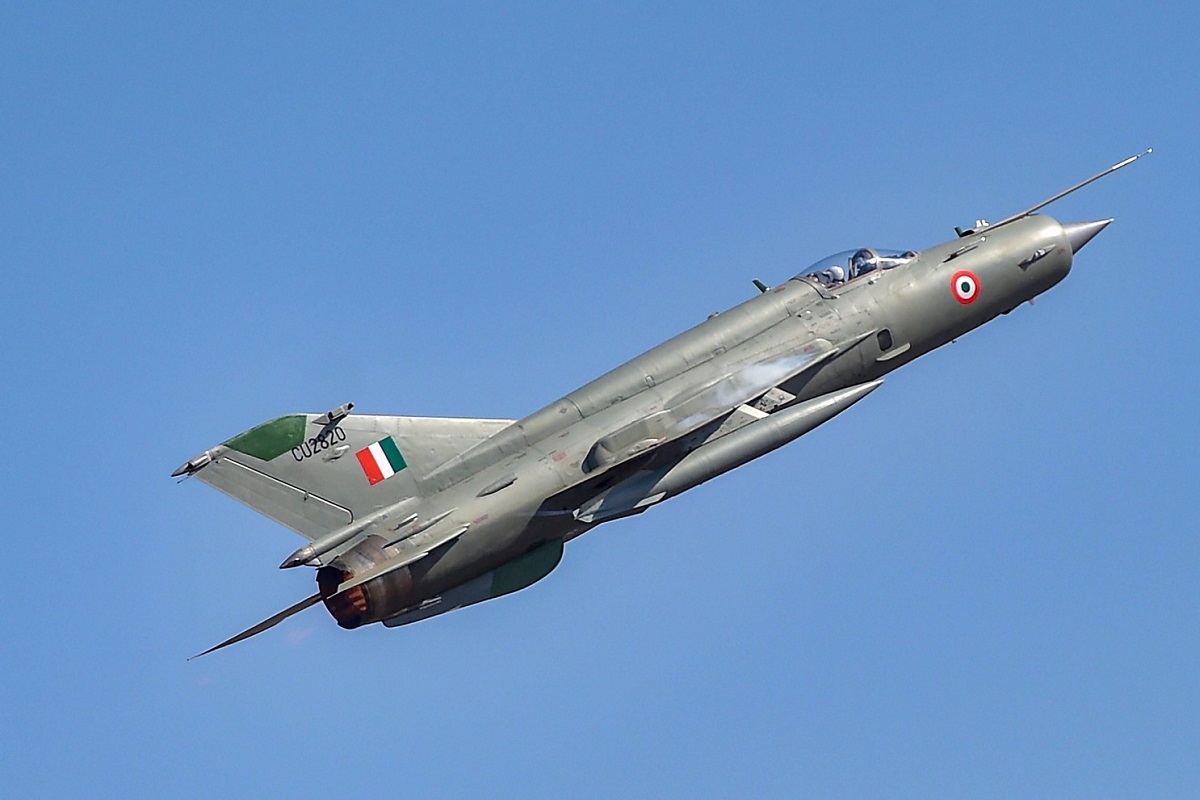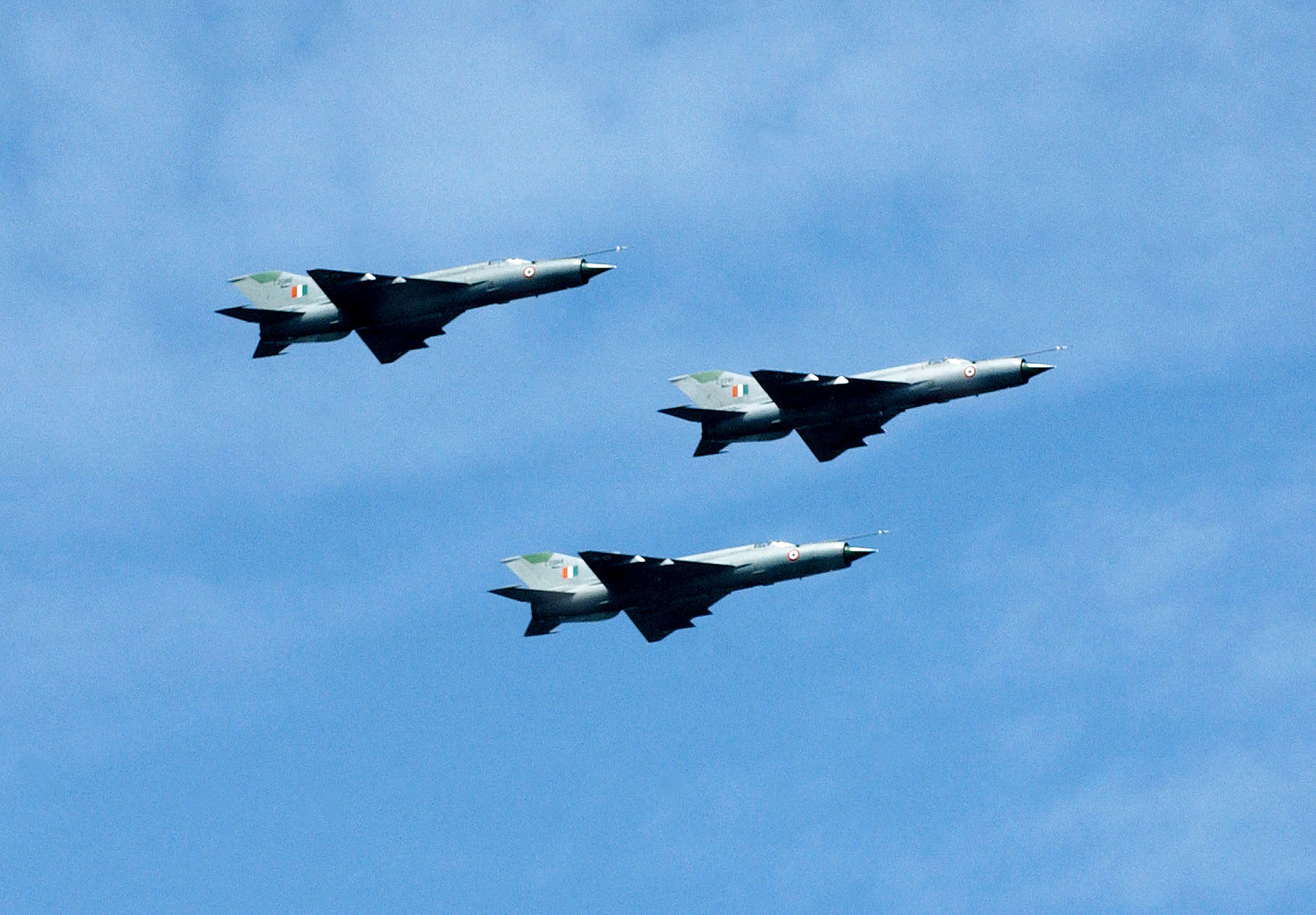The Indian MiG-21 is finally being retired after more than 60 years of service, during which it has achieved some notable kills for the Indian Air Force (IAF) while also earning the moniker of “Flying Coffins” due to frequent crashes.
The MiG-21 war machines entered service with the IAF in 1963. The Indian Air Force operated about 874 MiG-21s, including the 657 that were license-produced by Hindustan Aeronautics Limited (HAL).
With just 36 MiG-21 Bison variants of the aircraft remaining in the IAF now, the MiG-21 will officially fly into the sunset on September 19, 2025.
The phase-out ceremony will be held at the Chandigarh Air Base, the same base that first received the MiG-21s in 1963, marking a full circle for these Soviet-era fighter jets. This facility, like many others, came under attack during the conflict with Pakistan in May 2025.
“Indian Air Force to phase out the MiG-21 fighter jet by September this year. The squadrons operating the aircraft are currently in Nal air base in Rajasthan. The LCA Mark 1A aircraft would be replacing the MiG-21s in the IAF,” a defence official was quoted as saying by Indian media reports.
The MiG-21s participated in their last flypast in the world on the 91st anniversary celebration of the Indian Air Force (IAF) on October 8, 2023. At the time, the former IAF chief Air Chief Marshal V. R. Chaudhari told the EurAsian Times that he would remember the aircraft for its “raw power.”
“The aircraft was a pure pleasure to fly. Yes, we faced some issues, but it is a legend that has served us well,” the IAF chief added.
The MiG-21 will be replaced by the LCA Tejas Mark-1A, whose delivery has been delayed but is expected to pick up pace now that the GE F404 engines are being delivered to India.
According to reports, HAL plans to deliver at least six Tejas Light Combat Aircraft Mark 1A to the IAF by March 2026. This essentially means that once the MiG-21s are stood down, the IAF’s squadron strength will reach an all-time low at just 29.
Nevertheless, the end of the MiG-21’s service would be an emotional moment for the IAF, its officers, veterans, and the people of this country, many of whom grew up associating the aircraft with the might of the Indian Air Force. MiG-21s have the distinction of being the first supersonic fighter jets of the IAF and one of the force’s longest-serving aircraft.
India’s first non-Western fighter jet, the MiG-21, was relatively inexpensive because India was able to license and produce the aircraft domestically, reducing its reliance on imports and keeping costs low, making it practical to maintain a large fleet. India expected to have a replacement ready for the MiG-21 by the 1990s. However, the delays in the LCA Tejas program and lack of alternatives, coupled with a plummeting squadron strength, forced the IAF to upgrade the jets and keep them in the skies.
The IAF upgraded MiG-21 variants, notably the MiG-21 Bison, with improved avionics, radar, and weaponry, extending the aircraft’s operational relevance into the 2000s and allowing it to remain effective in air defense and ground attack roles despite its age.
Amid persistent threats from Pakistan and China, the MiG-21 filled critical gaps in numbers and roles, especially for short-range air defense and tactical missions.
The MiG-21 eventually earned the infamous moniker “Flying Coffin” due to a high number of crashes, which were mainly attributed to its aging airframe, demanding maintenance, and pilot errors in a challenging flight envelope.
A Bollywood film, ‘Rang de Basanti’ that starred Amir Khan and encapsulated the issue of the aging MiG-21, became a blockbuster and was critically acclaimed amid prevailing circumstances.
However, an analysis conducted in 2021 revealed that the notion of the MiG-21 being a ‘flying coffin’ did not hold much water. The percentage analysis of the yearly loss of IAF aircraft suggested that the MiG-21 was at the bottom, with just a 0.55 percent peacetime attrition rate in 58 years, while other aircraft were far above in the queue, as reported by the EurAsian Times at the time.

Some experts have noted that the ‘flying coffin’ publicity of the aircraft was due to excessive media coverage of the crashes that brought more spotlight on the vintage aircraft, developing a damaging narrative about its safety and combat capabilities.
As the aircraft nears its farewell, the EurAsian Times would like to focus on the many incredible feats it has achieved in its 60 years of service in the IAF, as well as across the globe.
The MiG-21 That Scored Incredible Kills
The aircraft has seen action in different wars, including the 1971 Bangladesh war, the 1999 Kargil conflict, and the most recent air duel after the Balakot airstrike in 2019.
The fighter jet saw its first action on December 4, 1971, marking the beginning of the Bangladesh Liberation War. The MiG-21 was one of the IAF’s most advanced fighters at the time, facing off against Pakistan Air Force (PAF) aircraft like the F-86 Sabre, F-104 Starfighter, Mirage III, and Shenyang F-6.
The MiG-21 was credited with several air-to-air victories during the war, scoring 4–5 kills in aerial combat, primarily on the Western Front, where most dogfights took place.
On December 6, Wing Commander Bishnoi led a formation of four MiG-21s from the 28th squadron towards Tezgaon, the only operational PAF Airbase in East Pakistan. Each MiG-21 dropped 500 kg of iron bombs directly onto the runway, grounding the Pakistan Air Force (PAF). No PAF Sabre could take off from the cratered runway, and the IAF dominated the skies over East Pakistan within 48 hours.

The MiG-21 was deployed in combat again during the Kargil War for close air support (CAS) and interdiction, targeting Pakistani bunkers, supply lines, and positions on peaks like Tiger Hill and Tololing.
Although the heroes of this war were the Mirage-2000s, the MiG-21s played a crucial role by delivering unguided munitions against enemy positions. Moreover, the MiG-21’s high speed and ability to operate at altitude made it suitable for quick reconnaissance runs, and the data from MiG-21s helped the IAF and Indian Army target key positions, contributing to operational success.
Less than a month after the Kargil War ended, a peculiar situation arose: a Pakistan-operated Atlantique aircraft, a long-range maritime patrol aircraft operated by the Pakistani Naval Arm, capable of conducting anti-submarine operations and ground-attack missions, entered Indian airspace.
The Atlantic-91 breached the Indian airspace and entered the Kutch region of Gujarat. In response, the IAF scrambled its MiG-21 from the Naliya airbase in Kutch, which later shot down the Pakistani aircraft for security reasons.
You can read a detailed EurAsian Times report on this incident here.
In 2019, the Indian Air Force MiG-21s entered a dogfight with Pakistan’s F-16s and claimed to have brought down the ‘Fighting Falcon.’ Though Pakistan has denied the alleged loss, India claimed that Wing Commander Abhinandan Varthaman shot down a PAF F-16 using an R-73 air-to-air missile before being shot down by the Pakistan Air Force, which forced him to eject in Pakistan-occupied Kashmir.
The IAF released AWACS radar images showing a PAF jet disappearing, identified as an F-16 based on its electronic signature and radio transcripts. Additionally, it also displayed fragments of an AIM-120C AMRAAM missile, which is compatible only with PAF F-16s among Pakistan’s fleet, as evidence that the F-16 was indeed downed.
In 2004, the MiG-21 faced off against the US F-15 in the first edition of the Cope India 2004 military exercise. The American Eagles, who have zero losses and 100 kills to their name, were trounced in 90 percent of the fights. The thrashing was so severe that the USAF decided to acquire more F-22 ‘Raptors’ for its fleet.

In operation in 60 countries, the aircraft has achieved several notable kills worldwide on diverse battlefields. For instance, during the Vietnam War, the MiG-21 was a key asset in North Vietnam’s air defense against US Air Force and US Navy aircraft, including the F-4 Phantom, F-105 Thunderchief, and F-8 Crusader.
In one of the most notable incidents from the war, a USAF F-4C Phantom was intercepted over North Vietnam by a MiG-21 during Operation Rolling Thunder. The pilot downed the Phantom by firing an R-3S missile after using Ground Controlled Interception (GCI) to position the MiG-21 for a high-speed ambush.
This was one of the first verified MiG-21 kills, proving that the aircraft could rival the F-4, demonstrating its ability to challenge the F-4, a mainstay of US air operations.
In the Middle East, the MiG-21s, operated by Egypt, Syria, and Iraq, scored kills against Israeli Air Force (IAF) aircraft during the Six-Day War (1967), War of Attrition (1967–1970), and Yom Kippur War (1973).
Some of the most significant MiG-21 kills include Mirages and F-4s in the Arab-Israeli wars, an F-104 and an F-86 in the Bangladesh Liberation War of 1971, and F-4s and a potential B-52 in Vietnam.
These victories, which were won against aircraft that were frequently better equipped, demonstrated the MiG-21’s speed and agility. The MiG-21 was a maverick before mavericks existed, and it kept showcasing that with its hit-and-run ambushes, high-risk maneuvers, and unconventional engagements.
For the Indian Air Force, the retirement of the Bisons would be one of the most bittersweet moments in its history.
- Contact the author at sakshi.tiwari9555 (at) gmail.com
- Follow EurAsian Times on Google News




